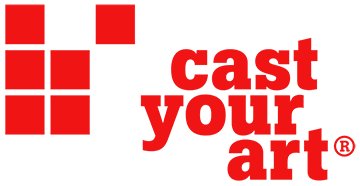Birgit Jürgenssen - Come on now Miss Juergennsen
Jürgenssen explores the scope of female identity constructions and the gender roles within her sociocultural environment of the 1970ies. By means of drawings and photography she develops surreal and subversive counter-concepts and demonstrates that humor and poetry can very well go along with feminist strategies.
In cooperation with Verbund Collection, the Bank Austria Kunstforum has the first posthumous retrospective of Birgit Jürgenssen on display, with 250 works of art of different media. In drawings, watercolors, Polaroids, photograms, objects, performances and videos, Jürgenssen explores the scope of female identity constructions and the gender roles in her immediate sociocultural environment.
After her premature death in 2003 more than 3000 works are being reviewed in the custody of the Viennese art dealer Hubert Winter. Only a smaller part of them is accessible at this point.
In 1968 she started studying graphic art at the University of Applied Arts in Vienna – at this time she heard about political action in the media rather than being involved herself. In this respect the beginnings of her artistic work coincides with the heyday of feminist avant-garde and represents the essential starting point of her oeuvre.
Nevertheless she was not someone to perform in the front line. The work of Birgit Jürgenssen is more cautious, calmer, more poetic and characterized by the technical strength of her drawing. Subtly she scrutinizes typically feminine gender stereotypes in a surreal and subversive manner. Her works evoke thought and sensual comprehension at the same time, precisely not to be encountered in this combination within the conceptual art of the 1970 avant-garde.
She said she was too shy for performance art. Jürgenssen operated privately; her counterpart was a photographic camera with a self-timer.
At her time, which is not so long ago, our society actually believed the a woman could reach her full potential at best when at her home, tame and innocuous, performing her domestic chores.
“Now now, Mrs. Jürgenssen, why wear yourself out carrying these heavy lithographic stones, you are going to get married soon anyway!” is what she got to hear during her studies.
However, in her drawings the lap cat mutates into a predatory man-animal combination. Subtly Jürgenssen goes on the feminine counterattack. Her means are the deconstruction of ordinary figures of speech and literal illustration of set phrases. In all fairness she includes the male, be it as a wimp, or as a being with unfinished limbs, but also as a partner in relationships; she highlights that patriarchal structures are not simply forced upon women, but are rather embraced and internalized by both sexes equally.
She wanted to escape her bourgeois upbringing and the limitedness she sensed in it. In one of her key works of 1976, her respectably dressed body is pressing against a glass panel, representing an almost invisible boundary to the outside world, titled “I want to get out of here!” The object “housewife-kitchen apron” of 1975 is a three-dimensional stove being virtually incorporated into the woman.
Birgit Jürgenssens imagery is more akin to the literary classic „Alice in Wonderland“beloved by her, rather than to an orthodox feminism: shoes and beautiful dresses were not at all outside of her range. She was taken to shoes in particular. A cornucopia of images unfolds in this series of works; where her delight in the fetish and her exploration of it are equally obvious and do not necessarily have to contradict each other.
Jürgenssens examination of female identity is an itinerary, ranging from rebellion to self-affirmation, from the sensual and erotic to concealment as the director of the Verbund collection, Gabriele Schor, describes in an interview. “The gender specific identity originates in the space that humans create for themselves in order to exist in it”, Jürgenssen notes in a letter and on a plate of 1995 she only professes I AM. (ko/ca)
Das könnte Sie auch interessieren

NIKOLAUS GANSTERER. Drawing Matters Other Others
21. November 2015
FLORENTINA PAKOSTA. A Retrospective at Albertina Museum
27. June 2018
GERHARD RICHTER. Landscape
24. October 2020
MARTIN KIPPENBERGER. Seine Sprache, seine Kunst
27. September 2016
Degas, Cezanne, Seurat - The Dream Archive from the Musée d'Orsay
19. February 2015
STRABAG ARTAWARD INTERNATIONAL 2019. Anerkennungspreisträgerin Maria Legat
12. February 2020
DOROTHEE GOLZ. Hohlwelten
18. September 2017
